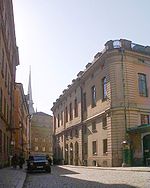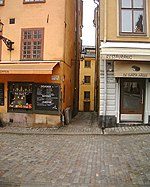Stockholm Bloodbath

The Stockholm Bloodbath (Swedish: Stockholms blodbad; Danish: Det Stockholmske Blodbad) was a trial that led to a series of executions in Stockholm between 7 and 9 November 1520. The event is also known as the Stockholm massacre.The events occurred after the coronation of Christian II as the new king of Sweden, when guests in the crowning party were invited to a meeting at Tre Kronor castle. Archbishop Gustav Trolle, demanding economic compensation for things such as the demolition of Almarestäket's fortress, questioned whether the former Swedish regent Sten Sture the Younger and his supporters had been guilty of heresy. Supported by canon law, nearly 100 people were executed in the days following the meeting despite promises of amnesty. Among those killed were many people from the aristocracy who had been supporting the Sture Party in the previous years. Thereafter King Christian II became known in Sweden as Kristian Tyrann ('Christian the Tyrant').
Excerpt from the Wikipedia article Stockholm Bloodbath (License: CC BY-SA 3.0, Authors, Images).Stockholm Bloodbath
Stortorget, Stockholm Gamla stan (Södermalms stadsdelsområde)
Geographical coordinates (GPS) Address Nearby Places Show on map
Geographical coordinates (GPS)
| Latitude | Longitude |
|---|---|
| N 59.325 ° | E 18.070833333333 ° |
Address
Stortorget
Stortorget
Stockholm, Gamla stan (Södermalms stadsdelsområde)
Sweden
Open on Google Maps











